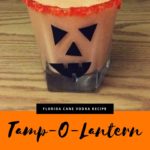Interested in cooking with cheese? This guide will teach you about the different types of cheese, their flavor profiles, and how to cook with each of them.
From Mozzarella to English Cheddar, your guide to cooking with cheese and the great cooking cheeses.
There are thousands of varieties of cheese available, from every corner of the world not all however, are great cooking cheeses. Here are some of the classic cheeses for cooking with.
What are the Qualities of a Good Cooking Cheese?
This is somewhat of a trick question, as the answer depends upon the style of cooking and what is to be achieved. Here are some of the key considerations.
-- Melting Habit – In cooking, cheeses melt in a different ways all of which give a cheese a suitability or not for a given usage. For sauces, a cheese is required which will completely melt away into the sauce, leaving only the flavour. On the other hand, a cheese such as Haloumi has an ability almost to avoid melting, making the cheese perfect for use in dishes such as vegetable kebabs.
--Flavor – One of the prime reasons for using a cheese in cooking is to impart flavor upon a dish. Strong varieties such as Cheddar will add a strong cheese flavor to a sauce or dish. Not all cheeses however, have such strong flavors a point to note in the selection of a cooking cheese.
Texture – Whilst some cheeses are used to impart a strong flavor on a dish, others with a milder flavors are used for texture. Mozzarella is a classic example, the cheese in itself does not have a massive flavor, the cheese is cooked with, instead to lend its unique chewy texture to dishes such as pizza and grilled sandwiches.
-- Salt content – Cheeses have a variety of salt contents present in their constitution. Remember that such salt levels will add to the salt content of the overall dish. As such consider that the use of a salty cheese may off set the need for seasoning of a dish.Great Ingredients – Classic Cooking Cheeses
-- Cheddar – A staple English cheese. Cheddar is a cows milk cheese and is often made to have a strong flavor. The cheese melts well and as such, its melting point and flavor makes it the ideal cheese for the production of cheese based sauces.
-- Haloumi – True Haloumi comes from Cypress and is made of Ewe’s milk. The cheese does not melt readily, this may be considered a drawback in cooking for many purposes. However, the unique properties of Haloumi mean that it is great for inclusion on a kebab or other barbecued food.
-- Emmental and Gruyere – Both of these are classic Swiss cheese of the “holed” variety. Both cheeses melt well and go well with earthy flavors such as mushrooms. The combination of the nutty flavor of Gruyere and mushrooms make an ideal filling for a vegetarian version of ravioli.
-- Feta – This is the classic Greek goat’s cheese. The cheese is salty and bright white in color. Consider using this cheese in the cooking of rustic versions of pizza or grilled sandwiches. Grilled Feta goes well with olives and peppery green salad leaves, such as rocket.
-- Blue Stilton – The classic blue cheese of England, produced only in the three counties of Leicestershire, Nottinghamshire and Derbyshire. Blue Stilton is great cooked in a soup, Stilton and Broccoli is a classic.
-- Mozzarella – True Mozzarella is made from buffalo milk, although much of the Mozzarella which is sold in the supermarket is made from cows milk. Mozzarella has a very mild flavor, the true merits of Mozzarella in cooking its chewy texture and ability to stretch into long strings. Mozzarella is a classic cheese for inclusion on a pizza.
-- Ricotta – Another classic Italian cheese. Ricotta is a “whey” cheese with a grainy texture and does not ooze when cooked. Ricotta is ideal used in combination with spinach, this can then be used as a filling for baked pasta dishes such as Cannelloni.




